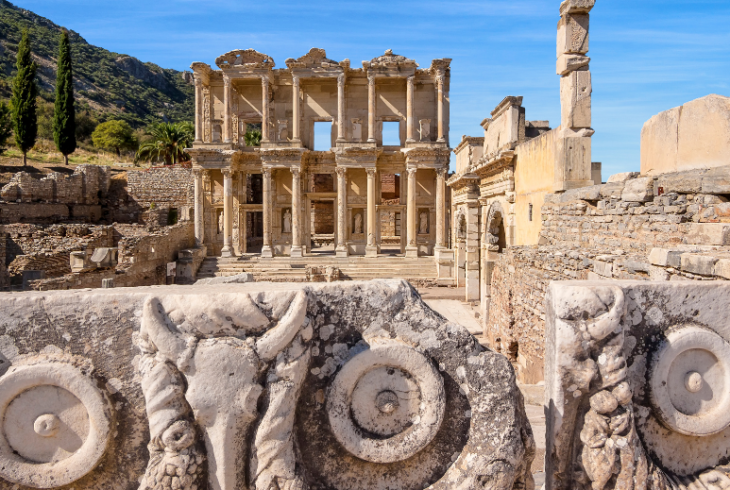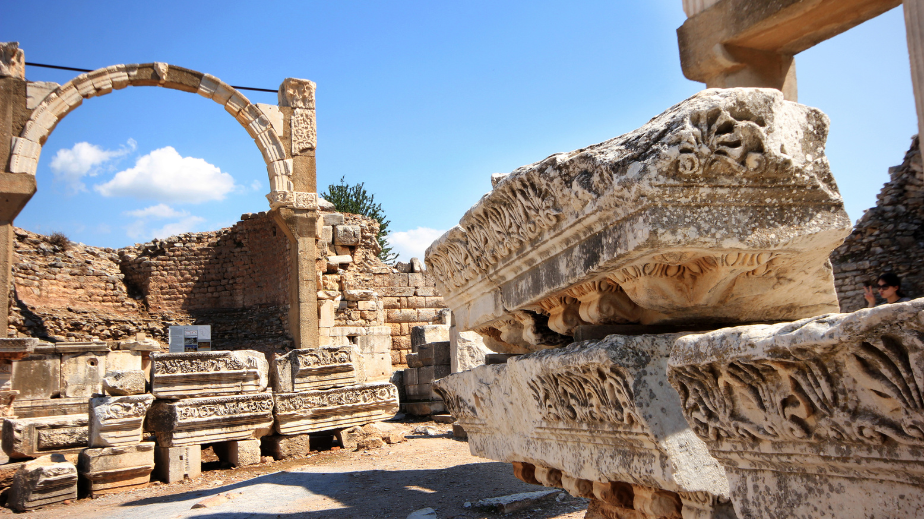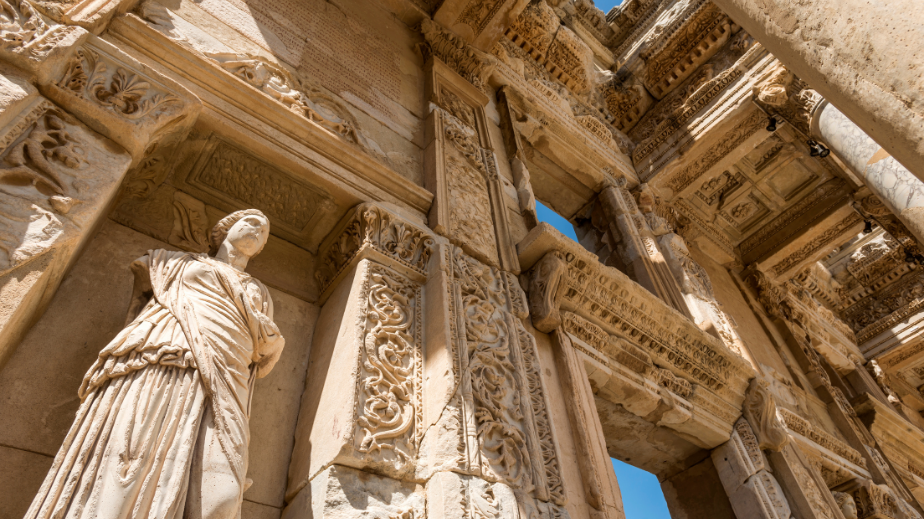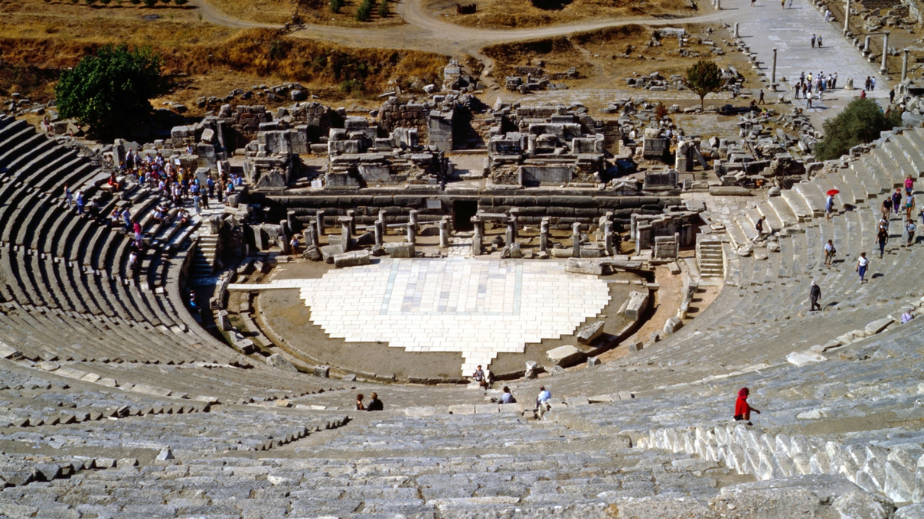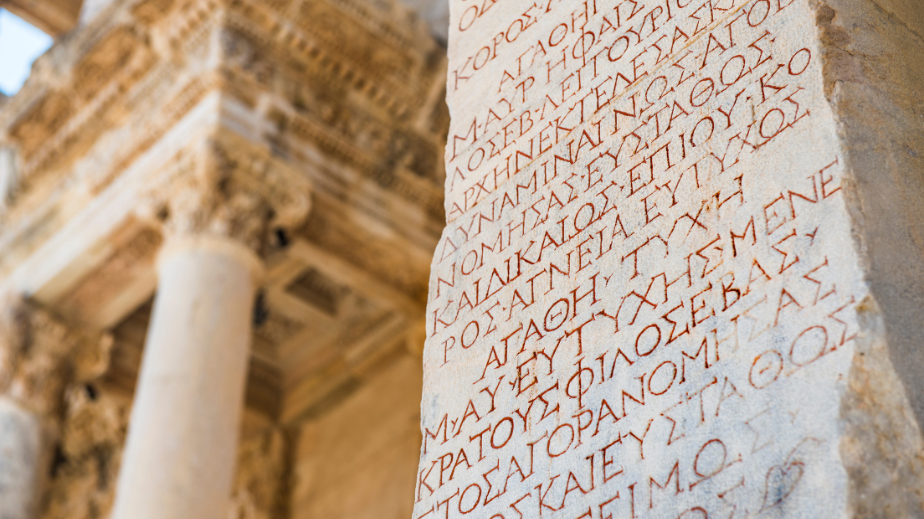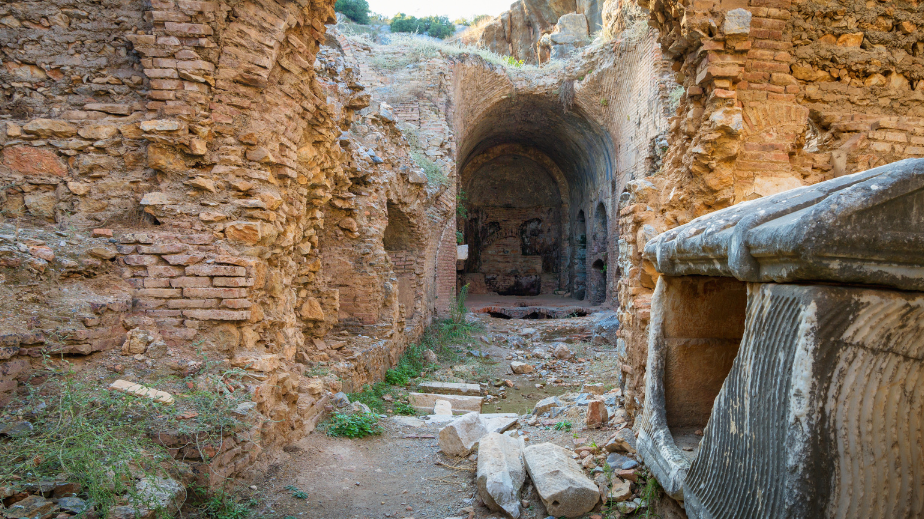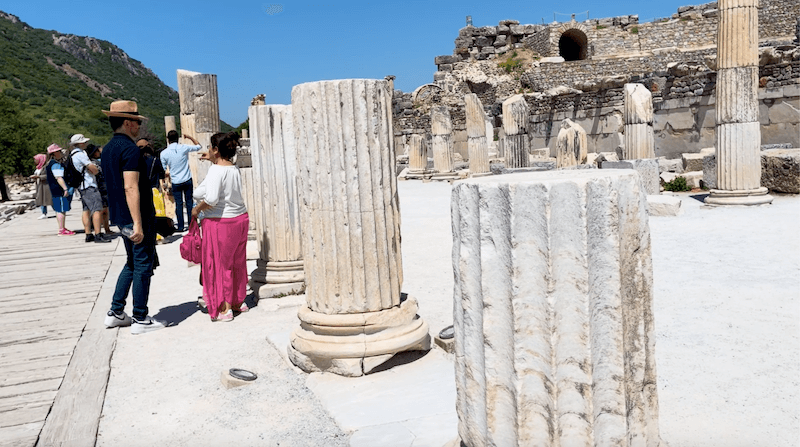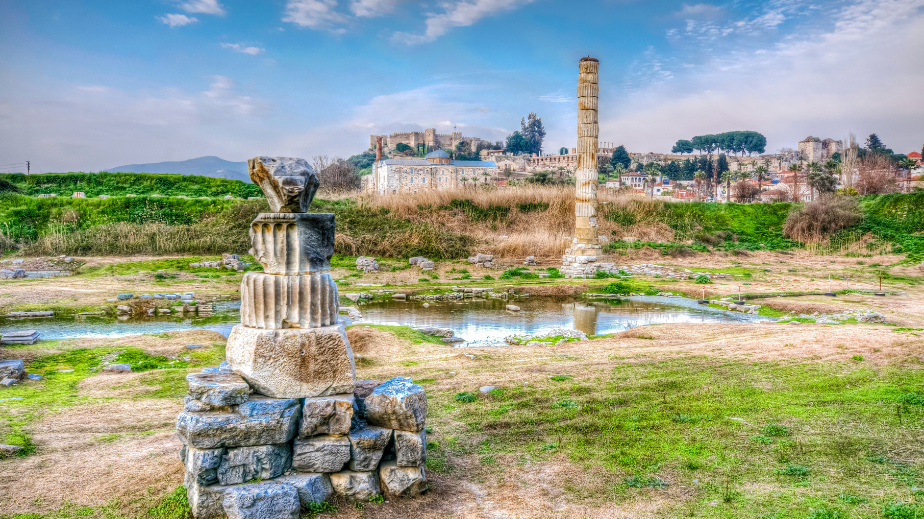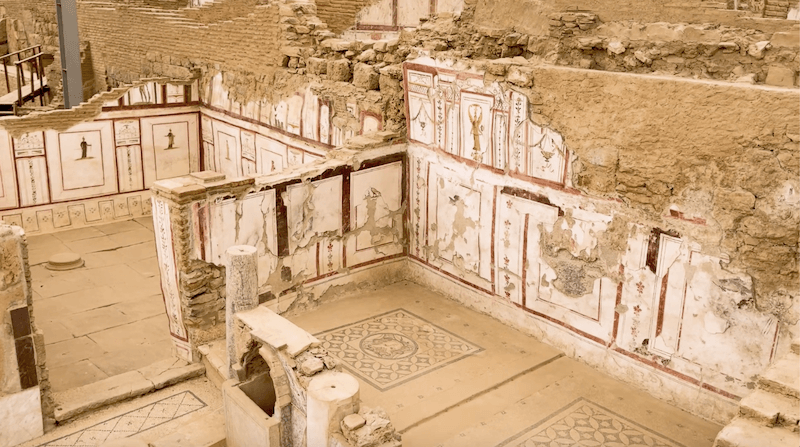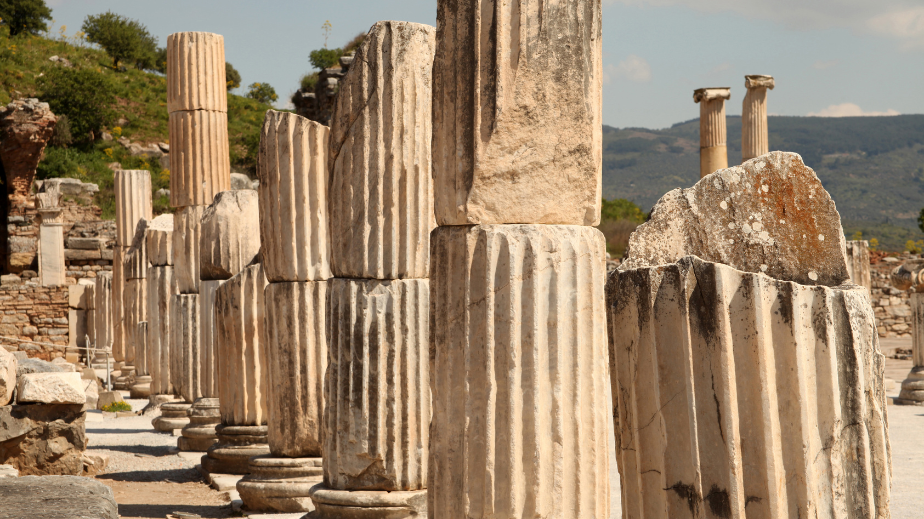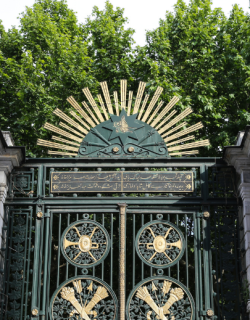Simply put, the ancient city of Ephesus is one of the most remarkable archaeological sites in the world. Once a bustling port city and the capital of Roman Asia Minor, Ephesus owed its ancient importance to being the spiritual headquarters of the cult of Cybele: an Anatolian fertility goddess who was later known as Artemis, and eventually Diana to the Romans. Under Roman rule Ephesus was elevated to the capital city of the province and the fourth-largest city in the entire empire.
The glittering highlight of the classical city was the Temple of Artemis, rebuilt in the 4th century BC and ranked as one of the seven wonders of the ancient world. Although few traces of the great temple exist, the ruins of Ephesus that do survive will be sure to take your breath away, telling stories of grandeur, faith, and daily life in antiquity. In this guide, we’ll cover everything you need to plan your visit: how to get there, ticketing, opening hours, must-see highlights, and tips for making the most of your time in this extraordinary city.
Why Should You Visit Ephesus?
Ephesus is not just another pile of ancient stones - it’s a city that still breathes. Few archaeological sites anywhere in the world give such a tangible sense of daily life in antiquity. Unlike many archaeological sites that force your imagination to do all the heavy lifting, brilliant-preserved Ephesus speaks for itself. Walking through the city, you can almost hear the chatter of merchants in the covered porticos along the Arcadian Way, or imagine the cheers of 25,000 spectators in the Great Theatre. Step into the Terrace Houses, meanwhile and you’re in the parlors and dining rooms of the city’s elite, frescoes and mosaics still alive with color.
The city also has enormous historical significance. During the Roman period, Ephesus was a cosmopolitan hub with a population exceeding 200,000 people. It was a center for trade, culture, and religion, boasting theaters, libraries, aqueducts, and a remarkable system of streets lined with covered walkways.
Later, as Christianity spread, Ephesus became a key spiritual center: St. Paul lived here, wrote his letters to the Corinthians, and early Christians gathered in the city’s churches. Tradition also holds that St. John lived here with the Virgin Mary, and that he wrote his Gospel in this city. Visiting Ephesus is therefore a journey through both the grandeur of the ancient classical world and the origins of Christianity.
A Brief History of Ephesus
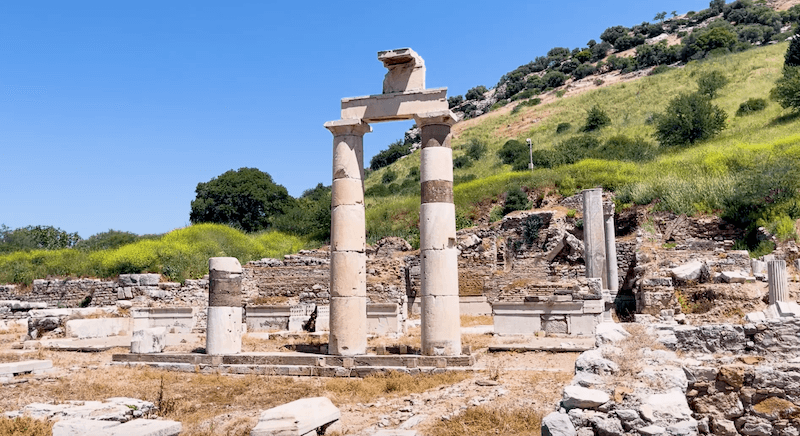
The history of Ephesus stretches back to the 10th century BCE, though its origins are shrouded in legend. Ancient sources attribute its founding either to a Greek prince guided by the oracle of Delphi or to Ephos, queen of the Amazons. Regardless of its mythical beginnings, Ephesus quickly became a prize for empires, thanks to its thriving port and strategic location on the Aegean coast.
By 133 BCE, the city had fallen under Roman control, and in 27 BCE, it became the capital of the Roman province of Asia. During the Roman era, Ephesus reached its zenith. The city was renowned for its monumental architecture: theaters, libraries, marketplaces, temples, and public baths were adorned with local marble and elaborate decorations. Its water supply was ensured by an intricate system of aqueducts, which supported a large, densely populated city. During the festival of Artemis, the city’s population would swell threefold with visitors from across the Roman world.
The Christian era brought new significance to the city. St. Paul stayed here in the 50s CE, preaching and writing letters to early Christian communities. St. John is believed to have lived here with Mary, and the city was chosen as the site for the Third Ecumenical Council in 431 CE, where Mary was declared the Mother of God (Theotokos). Byzantine emperors built impressive churches, including the Basilica of St. John, which stands over what is believed to be his burial site.
The city’s decline was gradual but inevitable. Arab and later Seljuk invasions, combined with the silting of the harbor, led to its abandonment by the 14th century. Today, Ephesus remains Turkey’s most important archaeological site, a place where the remnants of its grandeur are astonishingly intact.
MORE FOR YOU: A DAY IN EPHESUS
Join TE founder Rob as he discovers the best of Ephesus in a day!
How Do I Get to Ephesus?
Ephesus is easily accessible from several nearby hubs:
- By Air: The nearest airport is Adnan Menderes Airport in Izmir, about a 50-mile drive from Selçuk. From the airport, taxis, shuttles, and rental cars provide straightforward access to the site.
- By Train: Selçuk has a small train station connected to Izmir and surrounding towns. The route is operated by Turkish Railways and runs every 4 hours. The journey takes around 80 minutes and is a scenic and comfortable option if you prefer public transport.
- By Bus: Regular bus services run from Izmir and other regional towns. Buses arrive at Selçuk, which is just a short taxi ride (or a moderate walk) from the main Ephesus site.
- Private Tours: If you choose to book a private tour of Ephesus with Through Eternity, domestic flights to Izmir and onward travel to Ephesus are included in the price of the itinerary. This is by far the most comfortable and convenient way to get to Ephesus, meaning you can focus on what’s most important.
What Are the Opening Hours of Ephesus?
Ephesus is open daily, though hours vary by season:
- All Year Round : 8:00 AM – 7:00 PM. The ticket office closes at 6.15 PM.
- From June to October, as part of the special night openings, the archaeological site is additionally open from Wednesday to Saturday from 7:00 p.m. to 11:30 p.m, with last entrance at 10.30 PM
Please note that these times are subject to change, so consult the official website here before planning your visit. Visiting early in the morning or late afternoon helps avoid the midday heat and allows for quieter exploration.
How Much Do Tickets to Ephesus Cost?
Ticketing in 2025 is as follows:
- Ephesus Ancient City and Museum: €40
- Terrace Houses: €15
- Ephesus Archaeological Museum: €10
- House of Virgin Mary: €12.50
- St. John’s Basilica: €6
Combined tickets are available if you plan on visiting all the sites, and can save you some money. Children under 8 generally enter for free. Tickets can be purchased at the entrance or online in advance.
Should I Buy Tickets to Ephesus in Advance?
You can purchase tickets in advance online or at the entrance to the site. Apart from the busiest times of the year you shouldn’t encounter queues to enter, and so purchasing your ticket on-site is fine, although advance booking might give you more peace of mind before your trip. If you choose to book a private tour of Ephesus, then your tickets will be included in the cost.
Is It Worth Taking a Tour of Ephesus?
Absolutely. While wandering the ruins independently is rewarding - especially with a guidebook or official audiobook in hand, we think a guided tour brings the city to life. Guides provide historical context, point out lesser-known details, and share stories from the myths, Roman history, and early Christianity that make the site unforgettable. If you choose to take a tour you’ll also be able to visit the nearby House of the Virgin Mary, creating a full-day experience that captures both secular and sacred dimensions of Ephesus.
How Long Should I Spend at Ephesus?
You really need to devote an entire day of your itinerary to visiting Ephesus, especially if you want to visit additional sites like the Terrace Houses, the Basilica of St. John and the House of Virgin Mary - all of which we highly recommend. Walking shoes, water, and sun protection are essential, as the site covers a large area and much of it is exposed to the elements.
What to See at Ephesus
Below are just some of the must-see monuments in Ephesus. See our separate dedicated online guide for the complete list: What to See in Ephesus.
- Great Theatre: One of the largest surviving theaters of the ancient world, capable of seating 24,000 to 25,000 spectators, the theatre hosted gladiatorial contests, performances, and civic gatherings. Even today, the acoustics allow a speaker on stage to be heard clearly at the very top rows.
- Library of Celsus: A monumental facade built in the 2nd century CE to honor Tiberius Julius Aquila, the library housed tens of thousands of scrolls. Statues of Wisdom, Intelligence, Knowledge, and Virtue adorn the niches of the facade, offering insight into Roman values.
- Arcadian Way & Agora: The main streets, flanked by porticos, market stalls, and shops, provide a vivid sense of urban life in Ephesus. The agora, or central marketplace, was the heart of daily social and economic activity.
- Terrace Houses: These well-preserved homes belonged to the wealthy and upper-middle-class citizens of Ephesus. They feature luxurious mosaics, frescoes, and intricate decorations, giving visitors a glimpse into the lifestyle of ancient elites.
- Temple of Artemis: Once among the Seven Wonders of the Ancient World, the temple was a massive structure dedicated to the goddess Artemis. While little remains today, the surviving column and temple base hint at its former scale and grandeur.
- House of Virgin Mary: A sacred pilgrimage site believed to be Mary’s final home. Discovered in the late 18th century after a visionary nun described its location in detail, it draws pilgrims from both Christian and Muslim communities.
- St. John’s Basilica: Built in the 6th century by Emperor Justinian, it marks the believed burial place of the apostle John.
- Cave of the Seven Sleepers: This site commemorates a Christian legend where seven young men slept for centuries to escape persecution.
Final Tips for Visiting Ephesus
- Go Early or late: Beat the crowds and enjoy the cooler morning hours, or take advantage of the special summer night openings.
- Wear Comfortable Shoes: Uneven stone streets make walking challenging.
- Bring Sun Protection & Water: Most of the site is exposed.
- Plan Ahead: The ruins and surrounding sites are extremely extensive, so make sure you plan out your itinerary in advance or book a private tour.
- Respect the Ruins: Avoid climbing on ancient structures or touching frescoes and mosaics.
We hope you’ve enjoyed our guide to the wonders of Ephesus. If you’re ready to experience the ancient city for yourself, join our Ephesus in a Day Tour. With an expert guide by your side, the ruins spring vividly to life — from marble avenues and grand theatres to hidden corners you might otherwise miss. Step into history and see Ephesus the way it was meant to be seen.
